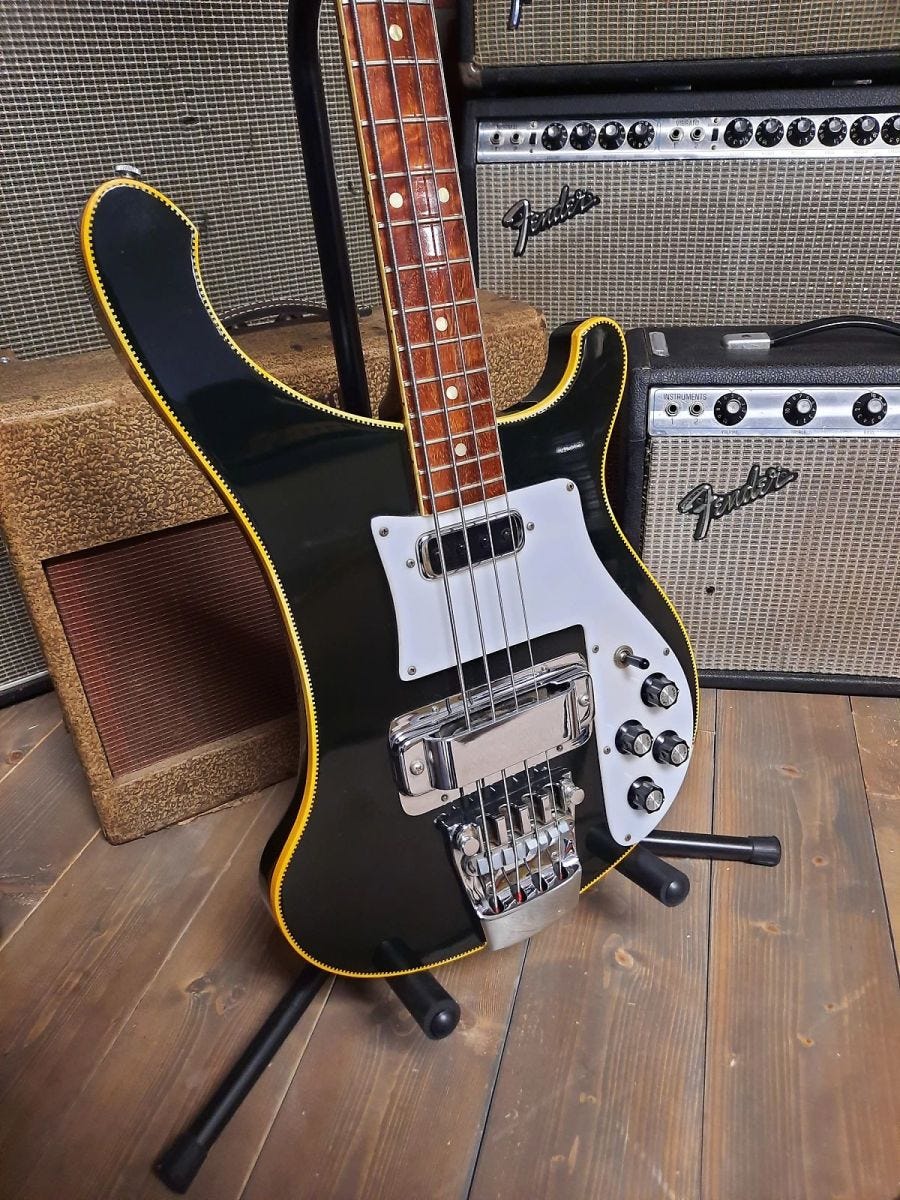Short Takes: 4001SS

Here’s one I bet you haven’t seen before! This is a 1974 4001SS. I know it isn’t the greatest picture, but look at it closely and tell me what you notice. Remember, it’s from 1974.
Bound headstock. Walnut headstock wings. Dot inlays. No skunk stripe. White nut. Kluson tuners with black plastic bushings. None of those things are right for 1974! They’re all too late or too early. Here’s a better picture of the body of another example:

Checkered binding? That’s not right for a 1974 either. And there’s something off about the neck join. It looks like it’s joining at the 18th fret instead of the 20th? What’s going on here? Look at the full length again. Do you see it yet?

If the proportions look a little off, that’s because they are. The scale is only 30” instead of the standard Rickenbacker 33 1/4”. It turns out that the “SS” in 4001SS stands for “short scale”.
A “handful” of these were made in 1974/1975 (I’ve read three in several places, but Collin Whitley tells me the factory found “quite a few” in the archives), likely as custom orders as they never appeared on any price lists or official literature.

That is the sum total that I know about these guitars. It’s not a lot. But they’re real, and now you can’t say there’s no such thing as a short scale 4001!
Want to learn more about…everything? Check out the rickenbacker101 site map here and see what’s available!


Andy -
I simply mean the story behind Rickenbacker's checkerboard binding in general - the origin, where they get it, the models it's been used on through the decades, whatever. It seems to be fairly unique to Rickenbacker, correct? You do such cool stories, I thought this may be worth a mention.
Chris
Also -
I seem to recall reading several years ago that Ben Hall mentioned they had purchased a "block" of checkerboard binding (from Germany?) which is supposed to last them for a long time.
Understanding the angle of how it's used in production as well will be a fascinating read for us Ric fans.
Chris